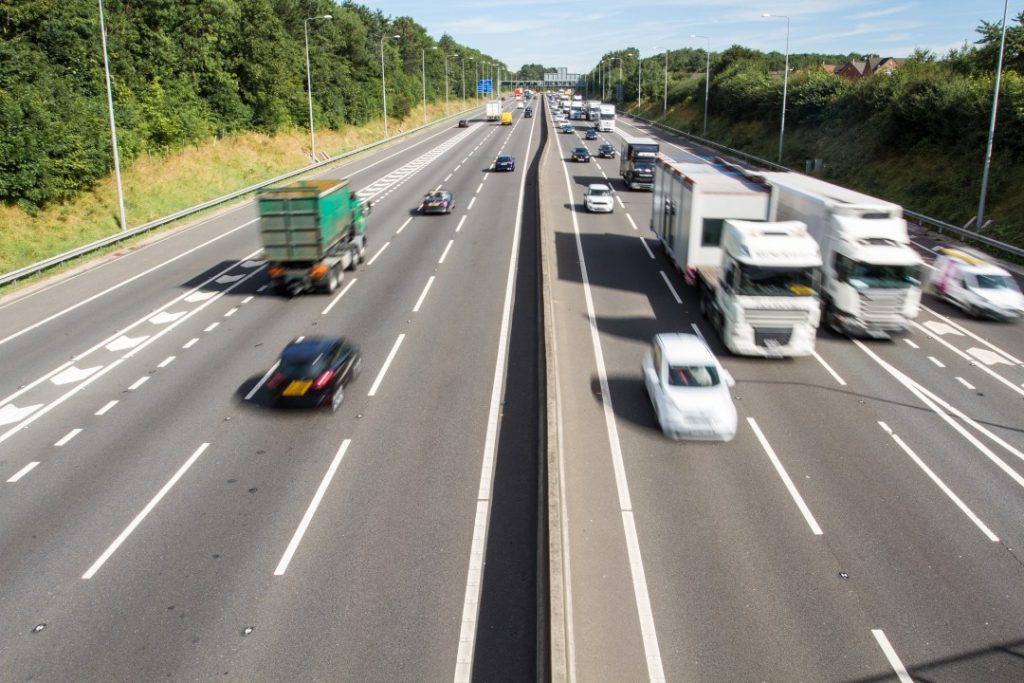A heavy goods vehicle (HGV) in unfamiliar territory can be a danger for all road users, as well as the vehicle driver themselves. Common types of accidents involving HGVs are cars getting caught in their blind spot, collisions whilst changing lanes or cars being rear-ended, although the worst scenario is for a HGV accident to happen on a busy motorway.
According to the latest Department for Transport (DfT) ‘Reported Road Casualties in Great Britain’ report, a direct impact of the coronavirus pandemic was that traffic on UK motorways decreased by 25.3% compared to 2019. In turn, this resulted in a 5.7% drop in HGV traffic, but what’s interesting is that the accident severity rate involving HGVs actually rose by 2%, indicating that even with less physical traffic on the road, accidents were still very much a concern.
The M1
As highlighted in New Civil Engineer, a recent warning came for the dangers of smart motorways after a collision with a lorry on the M1 between junctions 10 and 11, where dashcam footage implied that markings on the road caused a HGV driver to try to change lanes, leading to the collision.
As many drivers will know, the M1 is notoriously busy and dangerous, particularly in South Yorkshire where several breakdown collisions resulted in serious injuries and fatalities following its conversion to a smart motorway. As a result, Highways News reported that National Highways paused work on the M3 between junctions 9 and 14 for the smart motorway project, following recommendations that the roll out of the roads should stop until five years of safety data is available.
The M4
Moving to the M4, footage taken between junctions 18 and 17 by Avon and Somerset Police in 2021 showed a HGV driver holding two mobile phones whilst at the wheel, one to each ear.
In fact, mobile phone use is a common cause for HGV accidents across the country, as a story from Spring 2021 made the news as a lorry driver was caught on his phone, swerving in and out of motorway lanes before almost colliding with an unmarked HGV used by Highways England and the police to catch dangerous motorists.
The near crash was caught on camera on the M40 by operators in a ‘supercab’ (a plain white HGV that patrols England’s motorways network). What’s more, Highways England says their supercabs have captured clips that have led to more than 21,600 offences being handed out since their unmarked HGVs have been on patrol since 2015.
The M6
According to Fleet Point, Highways England currently deals with around 180 reported incidents on the M6 every day and in May 2021 they launched a weeklong road safety campaign to drive this number down.
The police and Highways England began patrolling the M6 in supercabs, and whilst the campaign overall was successful at reducing the number of traffic collisions from 71 to 59, over 600 total offences were caught just in this one week of action. This included 230 HGVs, with the most common offences being drivers using their mobile phone illegally and failure to wear a seatbelt, followed by driving with unsafe tyres, breaching driver hours regulations and load weight capacity.
However, even though the M6 is the longest motorway in the country, it’s the M5 which ranked one of the most dangerous roads in the UK for speeding offences, and the most accident-prone motorway, as according to data from Wessex Fleet, 14,833 speeding offences were committed on the South West motorway during 2020.
No matter what, motorways always demand a drivers’ full attention. Driving distracted or taking unnecessary risks can have devastating consequences for every road user, and in all HGV accident cases, it’s imperative to have the vehicle recovered as safely and as quickly as possible.
At Egertons, we’re one of the UK’s leading vehicle rescue and recovery operators, offering a 24/7/365 service across the country. Our services stretch from breakdown recovery to specialist assistance, and our sophisticated triage process allows us to deploy the exact right vehicles, first time.
This is supported by our 24-hour control room, 300-strong fleet, vast range of equipment available on hand and the technology it is equipped with, making us the preferred vehicle rescue and recovery operator for UK fleets to rely on, no matter what.
When you need us, we’ll be right here.
We’re ready when you are.


